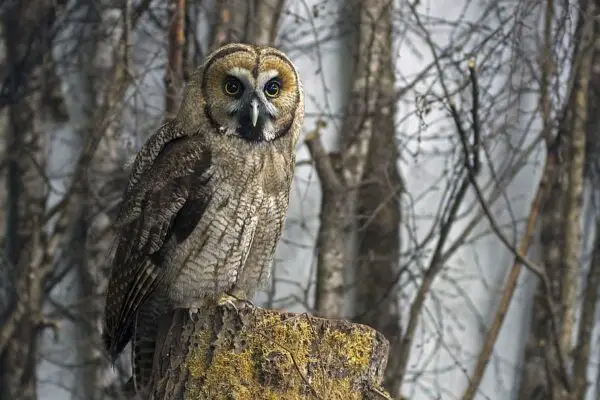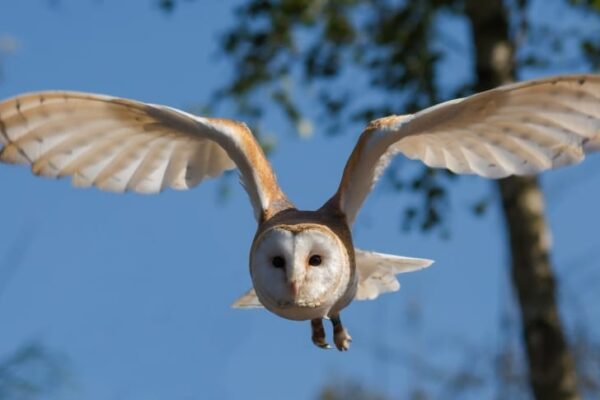It’s normal to wonder, as you watch seagulls swooping elegantly over the water, whether they ever grow thirsty and want to drink some saltwater. How can seabirds and coastal birds remain hydrated in wind-blown areas when freshwater supplies are scarce?
For those with limited time, the following is a brief response to your inquiry: Birds cannot drink saltwater as their primary supply of water because of the high concentration of salt in it, even if they may swallow some salt water. They may expel more salt because of unique glands.
Birds and the Dangers of Salt
Because of their distinct physiological makeup, birds are not meant to consume large amounts of salt. Birds have limited systems to expel salt from their bodies and lack sweat glands, whereas humans and some animals may excrete excess salt via urine and sweat.
Therefore, giving our feathery companions salt water or meals heavy in salt might have negative effects.
Dehydration as a Result of Higher Urine Production
When birds drink salt water, their bodies try to get rid of the extra salt by making more pee. Because they lose more water than they can intake, the birds may get dehydrated as a result. Their internal functioning might be disrupted and a variety of health complications can arise from an imbalance of salt and water in their system.
Were you aware? Certain seabirds, such as albatrosses, may expel extra salt from their bodies via unique glands located close to their eyes, which aids in their survival in salty habitats.
Effects on the Kidneys
An important part of controlling a bird’s body’s salt balance is the kidneys. The extra salt that birds get from drinking salt water strains their kidneys, increasing the risk of kidney injury or malfunction.
This might make it more difficult for them to filter waste and keep their electrolyte levels in check, which would worsen the consequences of eating salt.
Fun Fact: Research from the University of California, Davis revealed that salt negatively affected the kidneys of birds who drank salt water. The kidneys showed significant structural damage.
Death and Salt Toxicity
Birds that consume excessive amounts of salt may develop a disease called salt poisoning. Birds who ingest a lot of salt may develop neurological symptoms including convulsions, confusion, and even death.
Their cardiovascular system may be impacted by the harmful effects of salt, which might result in irregular heartbeats or even cardiac collapse.
Important Note: It is imperative that you get urgent treatment from a wildlife rehabilitator or veterinarian if you come across a bird that you believe has swallowed salt water or is exhibiting indications of salt poisoning.
It is crucial to remember that most birds are not designed to withstand the high salt concentration found in saltwater or severely salted diets, however certain bird species, such particular shorebirds, have evolved to tolerate slightly higher salt levels.
It is our responsibility as conscientious bird watchers to make sure we feed them a food that suits their individual requirements.
You may visit reliable websites like Audubon or BirdLife International to learn more about bird care and health.
Modifications for Salinity Equilibrium
The fact that birds can live in a variety of settings, even those with little freshwater resources, is one of their remarkable characteristics. This raises an interesting query: Are birds able to consume salted water? No, birds cannot drink salt water in the same way that people do.
They have, nonetheless, evolved amazing adaptations to preserve their salt balance and survive in settings with little freshwater.
Salt Islands
Depending on the species, specific salt glands are found close to an animal’s eyes or mouth. Their glands are essential in eliminating too much salt from their bodies. The blood is filtered by the salt glands to remove salt ions like sodium and chloride, which are then expelled as a concentrated saline solution via the nose or small ducts that are close to the eyes.
This amazing adaptation enables birds to sip brackish water or eat salty food and yet remove excess salt without disturbing their internal equilibrium.
nasal valves
The existence of nasal valves is another adaptation that aids birds in adjusting to their ingestion of salt water. By securely shutting, these valves may stop saltwater from getting into the respiratory system. Birds may protect their internal organs from potentially dangerous saltwater ingestion by shutting their noses.
This system serves as a barrier of defense, enabling birds to consume freshwater from a variety of sources while blocking the ingestion of saltwater.
osmoregulation
Birds use osmoregulation in addition to specialized salt glands and nasal valves to keep their internal salt balance in check. The process by which organisms control the amount of water and salt in their bodies is known as osmoregulation.
Birds have developed effective kidneys that minimize water loss by excreting concentrated urine and conserving water. This adaptation aids in preserving their general salt balance and enables them to thrive in settings with limited freshwater supplies.
It is noteworthy that different bird species have different adaptations for maintaining a salt balance. Some birds, such as seabirds, whose diet mostly consists of saltwater prey, have better developed salt glands. Others, like birds that live in deserts, have developed extra defenses to keep water in their bodies.
These alterations demonstrate the remarkable variety and adaptability of birds in their many habitats.
For further information about bird adaptations and their capacity to flourish in many environments, go to the Cornell Lab of Ornithology webpage at https://www.birds.cornell.edu/home/.
Where To Find Fresh Water for Coastal Birds
Seagulls and pelicans are examples of coastal birds that spend a lot of time close to saltwater bodies. They still need fresh water to thrive, however. So where do these birds obtain the freshwater they so desperately need? Let’s look at a few methods used by coastal birds to drink in their saline environments.
Gathering Rainwater and Dew
Coastal birds gather dew and precipitation as a means of obtaining fresh water. These birds have evolved clever strategies to profit from the natural irrigation system. Their feathers collect dew and rainfall as a result of their perching on high trees or rocks.
The gathered water then trickles down to their beaks as they shake their feathers. They may keep hydrated thanks to this clever technique without having to leave their coastal surroundings.
Streams and Springs with Freshwater
Freshwater springs and streams that empty into the ocean are common in coastal locations. Coastal birds have access to a great supply of fresh water from these springs and streams. To cool down, they can take a flight inland to these locations and drink or perhaps take a plunge.
These freshwater supplies are essential to their survival, particularly in the dry seasons when there may be limited access to other freshwater sources.
Flora and fauna
Additionally, coastal birds get their fresh water indirectly from their food. Succulents are among the many coastal plants that have adapted to their saline surroundings by storing water in their tissues. These plants may be eaten by coastal birds, who then take up the water required to keep hydrated.
Furthermore, several prey species—such as tiny fish and crustaceans—that coastal birds eat have a high water content. Birds may get both nutrients and water by eating their prey.
Observing how coastal birds have developed creative means of obtaining fresh water and adapting to their salty environments is intriguing. These tactics guarantee their survival in settings that can first seem hostile.
Thus, keep in mind that seagulls and pelicans have some clever strategies up their sleeves to remain hydrated even in salty environments the next time you see them close to the seaside!
Providing Seabirds with Drinking Water
Seabirds have special difficulty in obtaining clean drinking water, including terns, pelicans, and gulls. They can’t just depend on rivers, lakes, or puddles to stay hydrated as land birds can.
Rather, they have to locate other water sources, particularly if they are at sea for a long time. This article looks at a few of the techniques utilized to provide these amazing animals access to drinking water.
Drippers and Bird Baths
Using birdbaths and drippers is a frequent way to provide seabirds access to drinking water. These are usually placed aboard boats or in coastal regions where seabirds are known to congregate. Birdbaths are low, freshwater containers and drippers are artificial rainmakers that release water droplets gradually.
These alternatives work well to attract seabirds since they are drawn to the sound and movement of the water.
Drippers and birdbaths may be especially useful during dry spells or when there are few natural freshwater supplies, according to Audubon. For seabirds, they provide an essential resource that ensures their survival and well-being, particularly during protracted migratory flights.
Fresh Water Feeding by Hand
Hand feeding fresh water may be essential in certain situations, especially when dealing with wounded individuals or seabirds kept in captivity. This is giving the bird water directly, very cautiously, using a syringe or tiny container.
Before using this procedure, it’s crucial to speak with a wildlife specialist or avian veterinarian since it takes the right skills and expertise to prevent injury to the bird.
Considerations for Captive Care
Providing clean drinking water is essential for the health and welfare of seabirds kept in captivity. Ensuring the water is pure and devoid of impurities is crucial. To stop dangerous germs from growing, water containers need to be cleaned and maintained regularly.
Furthermore, a diversified diet that includes items rich in water content, such as fish or fruits, may be necessary for seabirds kept in captivity.
The Seabird Sanctuary states that the general well-being of captive seabirds depends on the provision of a suitable habitat. This includes having access to clean drinking water, eating healthy food, and living in circumstances that are as similar to their native environment as feasible.
Indices of Bird Salt Toxicity
Birds are renowned for their capacity for environmental adaptation and multi-weather survival. Their bodies, unlike those of aquatic creatures, are not made to withstand saltwater, nevertheless.
Birds’ kidneys are not designed to filter out excess salt, therefore drinking saltwater may be dangerous or even deadly. Here are various indicators that a bird is poisoned by salt:
Lethargic and feeble
Weakness and lethargic behavior are among the first indicators of salt poisoning in birds. Birds may seem drained, struggle to fly, or exhibit low vitality. This is due to the possibility of electrolyte imbalance caused by the excess salt in their systems, which may result in dehydration and general weakness.
Lack of water
One typical sign of salt poisoning in birds is dehydration. Their bodies attempt to get rid of the extra salt by making them pee more often when they consume saltwater. They get dehydrated as a consequence of losing more water than they are consuming.
Dry skin, sunken eyes, and a lack of moisture in the mouth or beak are signs of this.
Twisting of the Muscles and Seizures
Birds that consume too much salt may also have convulsions and twitching of their muscles. Their blood’s excessive salt content may interfere with their neurons’ and muscles’ regular function, resulting in seizures or even uncontrolled movements.
It is imperative that you get emergency veterinarian treatment if you see your pet bird exhibiting these symptoms.
It is crucial to remember that giving birds access to saltwater might have detrimental effects on their health. It is advised to provide your pet bird access to clean, fresh water if you reside in a region where the water is very salted.
A balanced diet that includes different meals and the right vitamins may also help them stay healthy overall and avoid salt poisoning.
Final Thoughts
Even though seabirds have adapted to use small quantities of salt water, they still need ocean water to be hydrated. Balance is maintained by glandular adaptations and renal systems. Fresh water is still necessary for coastal bird survival.
Seabird populations may be better supported by conservationists when they are aware of the effects of salt.





